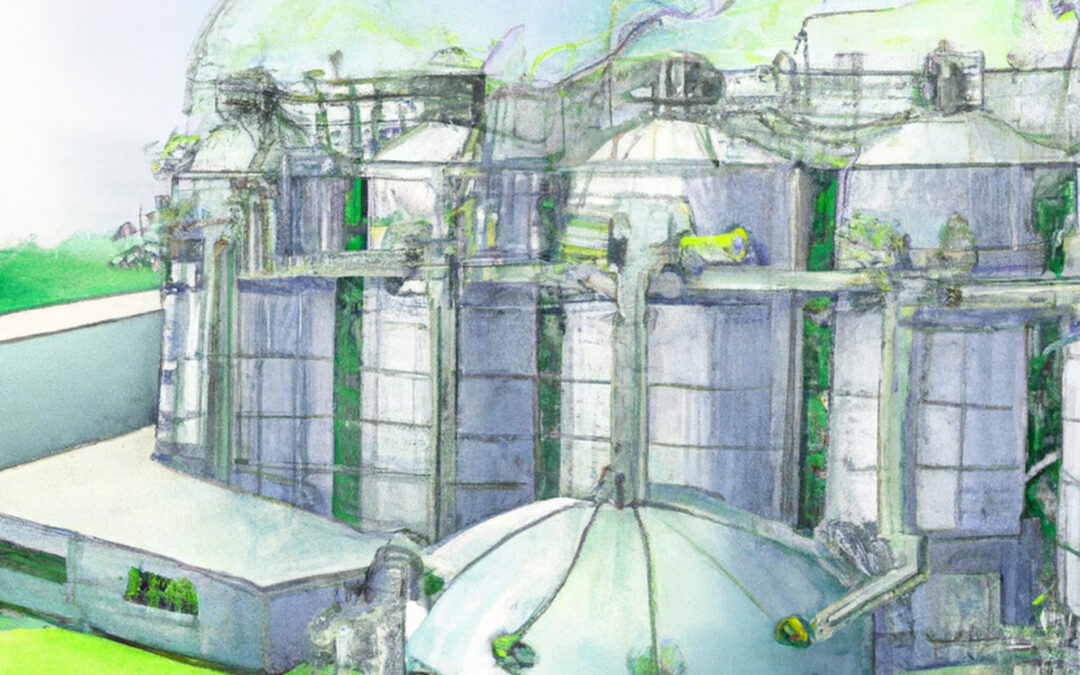We are delighted to welcome Noah Helman, PhD, as our guest blogger. Noah, who is Founder & President of California-based Industrial Microbes, will be contributing to Knowtion this month by exploring why he believes that biocatalytic conversion of waste-derived C1 feedstocks will be a key component of the Circular Economy.
***
The world population passed 8 billion in November 2022 and demand for petrochemicals and materials continues to increase. Higher demand for petrochemicals and lower supply (as the barrel as-a-whole becomes less profitable) is a recipe for higher prices, and an opportunity for competition from other sources. Meanwhile, the cost of renewable energy has continued to trend downward, creating a huge opportunity for technologies that can use renewable energy to power their chemical production.
In Part I, we discussed how the confluence of recent events has accelerated the timeline of the Energy Transition and the move to a Circular Economy. These factors have shifted the economic foundation on which the Material Economy is built. By 2030, new technologies will have been invented and deployed at enormous scale, taking advantage of low-cost electricity, waste materials, and recent advances in synthetic biology to circularize supply chains for a more sustainable future.
Now is the time to develop these technologies, critically needed to decarbonize chemicals and materials manufacturing. Based on what we know today, what does that future look like and what are those technologies that we need to develop?
Existing Petrochemical Infrastructure is Efficient but Inflexible
The petrochemical industry’s 100-year head start has been a barrier to entry for green chemicals. Global chemical majors have achieved enormous economies of scale at highly-integrated facilities to maximize efficiencies and reduce costs. For example, the heat from an exothermic reaction may power a steam boiler in another part of the plant. New competing technologies have struggled to cross the Valley of Death and often failed to come down the learning curve to the point of cost-parity. However, these highly-integrated oil refineries and petrochemical plants have optimized for cost savings over flexibility, and this is a fatal trade-off in the Energy Transition.
Petrochemical plants are going to struggle (1) to adapt to a new feedstock landscape and (2) to take advantage of cheap electricity. Integration made sense in a world where oil is both the cheapest source of energy and carbon atoms, but it is a disadvantage in a post-Energy-Transition world. By 2030, energy will be cheaper from renewable electricity and the carbon atoms in the petrochemical feedstock fraction of oil will be rising in cost. Refineries and petrochemical plants will need to be reengineered, dismantled, or in many cases, simply written off.
Biocatalysis Will Win on Both Cost and Carbon Footprint
In Part I, we revisited Rob Carlson’s 2019 article Seeing the End of Oil. Reading the economic trends, Rob asked, “where [will] we get all the complex compounds — that is, the atoms, in the form of petrochemicals and feedstocks — from which we currently build our complex economy? The answer is biology.” There are actually two questions here. First, “from what source will we get all the feedstock atoms?” Second, “how will we build up those feedstocks into the products we want?” Biology is the answer to both questions. We will tackle this second question below (“how to build?”) and save the first question (“which feedstocks?”) for the next article, Part III.
Biology’s strength is in its carbon and energetic efficiency. Evolution has gifted us an incredible toolkit with highly specific biochemical catalysts that operate at high rates at moderate temperature and pressure. Many catalytic steps can be performed sequentially in a single tank using enzymatic pathways, avoiding the need to perform costly separations at each step.
Industrial biotechnology is perfectly well-positioned to take advantage of the trends we are seeing in 2023. Biotechnology will be able to take new feedstocks and convert them efficiently into the products that downstream customers need. Fermentation fundamentally operates at moderate temperature and pressure and can use renewable electricity for pumping, stirring, and purifying the end product. Biomanufacturing is naturally positioned to take advantage of lower renewable electricity costs in a way that petrochemical manufacturing is not.
Advances in genomic sequencing, metagenomics, and computational biology have expanded the toolkit of enzymes at an astonishing rate. The number and diversity of enzymes in publicly accessible databases is staggering. In addition to testing enzymes pulled from these databases, enzymes can be rapidly engineered using directed evolution. This technique, for which Prof. Frances Arnold recently won the Nobel Prize, allows biocatalysts to be developed, implemented, and improved very quickly – faster than the chemical industry can identify inorganic catalysts with equal kinetics and specificity.
In cases where no known enzyme can perform the desired reaction, new enzymes may be designed de novo, using algorithms that have made shockingly fast progress in the last few years. The field might only be a few years away from having a web interface from which anyone can download an enzyme sequence for a desired chemical reaction.
Once designed and optimized, enzymes in living organisms can be produced at nearly zero cost. The enzymes are programmed into the cell’s DNA and these cells are then allowed to make copies of themselves (and our enzymes!) from inexpensive raw materials.
Optimizing for Cost Often Means Combining Biology and Chemistry
Unfortunately, biology may not be a magic wand. There are cases in which a biological system may struggle, such as when the desired product of a fermentation is toxic to the microorganism in which we are trying to make it. In fact, in all fermentations, a downstream process workflow separates and purifies the product from the output of the fermentation system. Typically, this is a series of unit operations, designed to maximize recovery and purity of the final product. It may be sensible to combine biological steps like fermentation with chemical catalysis to minimize cost and maximize yield and purity. For example, a non-toxic molecule could be the intermediate product of the fermentation, purified from the system, and then chemically converted to the desired final product. In the end, it is the total cost of production that matters, so systems will be designed for minimized cost.
Nevertheless, adding it up, we’re looking at a future wherein industrial biotechnology is a dominant player in the chemicals and materials space.
Where Will All the Atoms Come From?
The chemicals and materials industry will be dramatically reshaped by harnessing the tools of synthetic biology and industrial-scale fermentation. Fermentation offers a path to decarbonizing chemical production by catalyzing many reactions under moderate temperatures and pressures and using clean energy to power the equipment.
How can we tell if this will actually get implemented at scale in the next decade, rather than foundering like the Cleantech 1.0 boom of the mid-2000’s? If the biological route is cost-advantaged, it will get built – that economic advantage was largely missing the first time around. For both petrochemicals and biocatalytic routes to chemicals, the main driver of cost has been feedstock.
In the next article in this series, we’ll look into the feedstocks of the future: the sources of the atoms, why waste is key, the practical considerations, and the incredible economic opportunity that is being created.


Recent Comments